With 300.000 inhabitants, this city has 4 names: Sucre, Chuquisaca, la Ciudad de la Plata and the White City (Ciudad Blanca).
Its historical value, the colonial architecture and urban culture of Sucre earned it its satus as a Cultural Heritage site of the UNESCo in 1991.

1. Hidden Crypts
In the “San Francisco de Asís” Basilica you will find the oldest crypt in Bolivia. Discovered 20 years ago, it is located below the altar, where the beleivers hoped to be closer to God.
This crypt, also known as an Osario (bones in latín), contains the remains of colinial/republican era personalities of high social/economic status. Among them are Juan López de Cepeda, judge of the Real Audiencia de La Plata and Juan José de Segovia, the first criollo president of the Real Audiencia de La Plata. Their remians were moved here in 1581, when the crypt was inagurated.
It is also suspected that 3 spanish conquistadores españoles, caciques (tribal chiefs) and Independence heroes are buried here. For this reason more tunnel openings are planned to excavate the other five levels of the crypt.
Most churches in Sucre have crypts, a colonial heritage.
2. The great garden of Sucre

The General Cemetery is not only a burial ground, but also a beautiful garden where people come not only to visit the deceased, but also to find some quiet and relax.
Created in 1804 by viceroy Ramón García, the remains of great historical figures are resting in the differnet mausoleums.
Among distinguished musicians, writers and politicians you can find the famous Princes of the Glorieta, the Argandoña, wealthy persons and owners of several residences and the Banco Argandoña, currently known as the Banco Nacional de Bolivia. Francisco and Clotilde Argandoña had no children and after their deaths all their possesions passed to the government.
They were known not only for their wealth, but also for their social works including orphanages and the railway constructions for which they were given the title of hohonary princes by Pope Leo XIII in 1898. Their mausoleum is one of the most beautiful and important in the cemetery.

Today the cemetery is visited by many tourists who also witness the traditional funerals accompanied by mariachi bands and melancholic music.
3. Sucre's sweetest tradition

The aroma of chocolate is evident when you visit the installations of “Para Ti”.
The SOLUR S.R.L. company, manufacturere of the “Para Ti” chocolates, was created in 1989.
Products with exotic flavours such as dark chocolate with coca filling chocolate with salt and chocolate with chili are made for the international market.
90% of the ingredients used are national products. The company works directly with the cacao producers.
4. La Recoleta, the first plaza of Sucre
Located at the feet of the Sica Sica and Churuquella hills, its original name was Plaza Pedro de Anzures, after the founder of the Villa de La Plata that is today Sucre. The first corenerstone was laid here.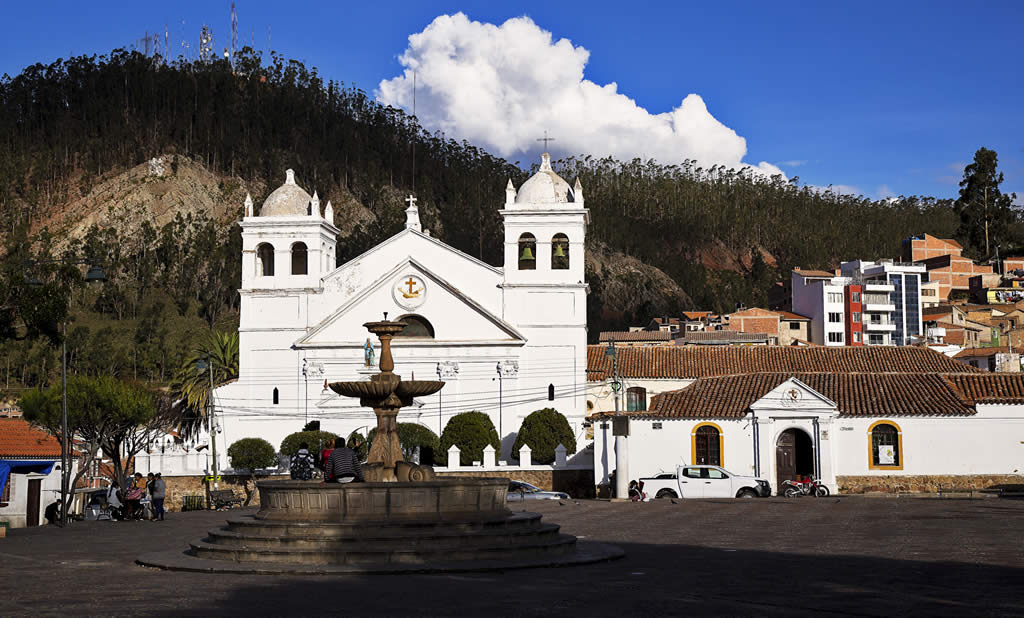
This is colonial Sucre from 1540. The narrow streets nearby were the first of the city.
In front of the square you will find the city's first convent “San Francisco”, where even today the friars congregate. Diagonally across is the public school of La Recoleta that used to belong to the convent.

Due to its great location, this square is visited by large numbers of tourists with their cameras, looking for the best panoramic shots of the city.
5. San Felipe, Neoclassic architecture in Sucre
Constructed at the end of the 18th century, this beautifully harmonious building belonged to the Congregation of the Filipenses, founded in Rome in the 16th century by the priest Felipe Neri, now a saint.
It is one of the youngest convents of the city, featuring several paintings of the era whose artists are unknown. The religious works show not only scenes from the life of Jesus, but also Saint Felipe.
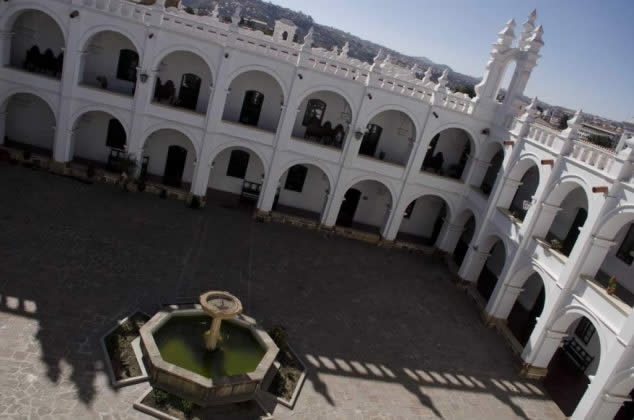
The internal courtyard of the convent has characteristic neoclassic architecture: round arches and decorative symmetrical details at the end of the columns.

The terrace is the most important area of the building where the priests gathered to pray and to meditate. Today it is a favourite tourist attraction, as the best photos can be taken from here.
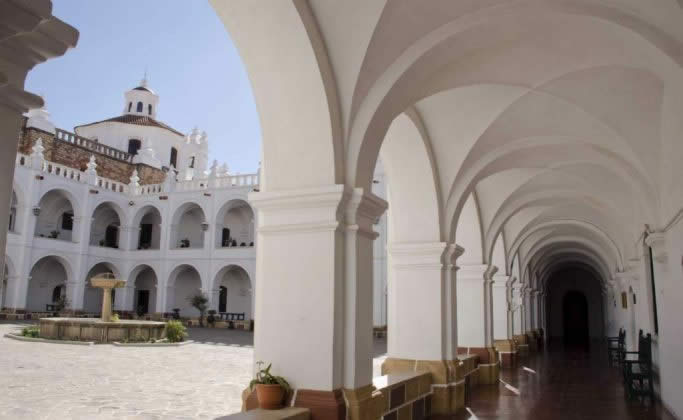
The panoramic view reveals the Cathedral tower in the distance. Life size statues stand in each corner, representin the 12 apostols of Jesus. At the top there is a clock that was brought from London in 1772.

The waterpainted brick floor is original, its green color contrasts with the reddish stone, retaining the same look the convent had from the beginning. The white paint was applied later, along with the other churches and houses in Sucre, giving the city its signature look.
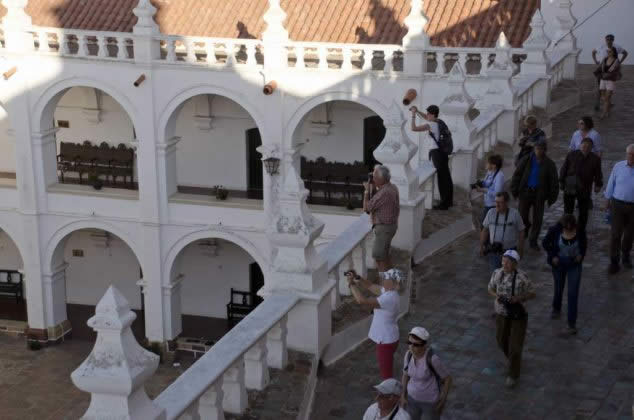
6. The house where Bolivia was born

The House of Liberty (La Casa de la Libertad) is where the history of this nation was born to republican life on the 6th of August, 1825. The halls tell the story of the independence of this country from maps that depict the old Tahuantinsuyo, empire of the Incas. Historical furniture, sumptuous jewelry, battle armour, even a room dedicated to a Juana Azurduy de Padilla; a valiant woman who fought for independence, battling the male chauvinist society of the time.
At first, the building belonged to the Jesuits, the main hall was used for mass, the local chapel included an altar screen for the choir.
In 1767 this religious order was expelled, the building ceased to be a church and became a Hall of Honor for the University of San Francisco Xavier where students defended their thesis in front of an audience.
The hall served its academic purpose until 1825, when the document of independence of Bolivia (Acta de la Independencia) was signed. On the 6th of August of that year 48 representatives of Alto Perú, lead by Simón Bolívar and Marshall Antonio José de Sucre, met here to discuss the 3 options order that would determine the future of the region. The first was to join Argentina, the second to join Perú; but in the end the third, to create a new nation, the Republic of Bolívar, was the one that received the majority of votes.
The 8 page document on display is not the original, it is a copy made with the same pen, tinta and style.
7. Dinousaurs that invade the city

Cal Orcko is the largest collection of dinosaur footprints in the world. The layers containing the the footprints are located in El Molino, belong to the cretassic period and display a large diversity of dinosaurs in the region.

Barely 300 meters from the cliff where the footprints can be observed, the Cretassic Park surprises the tourists with a unique opportunity to meet the protagonists of the period in their recreated natural environments.
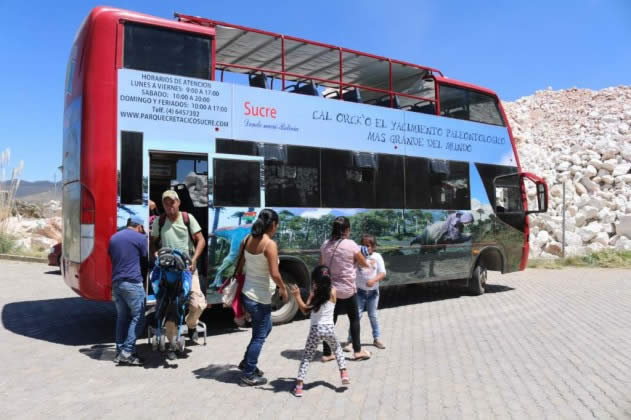
Until last year 5022 individual dinosaur footprints have been registerd from at least 8 species and 462 continuous trails on the cliff that runs 1500 meters long and 110 meters high. Recent studies have revealed about 5000 footprints more.

The culture and the study of dinousaurs is everyday life in Sucre. Whether on keychains or touristic promotions, the dinousaurs are here to stay.
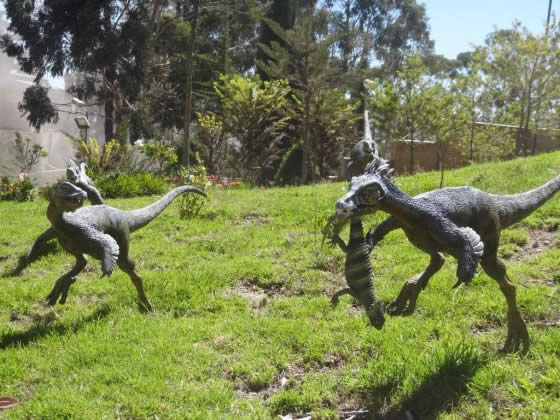
0 comments:
Post a Comment